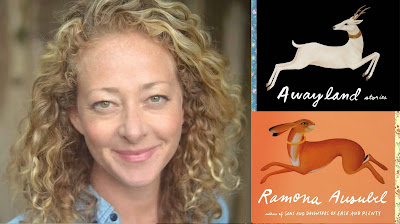In the 17th in a series of posts from authors of 2018 books entered for The Story Prize, Elena Georgiou, author of The Immigrant's Refrigerator (GenPop Books), offers advice to those who might feel like they're late to the party.
Dearest Not-So-Young Writer,
Perhaps you’ve had children to raise, or parents to take care of, or some other of life’s many obstacles has stood in your way, so it is only now in your late 30s or your 40s or 50s, that you have the space/time to write. Don’t worry; you’re not “behind.” What you might have missed in writing years, you will have certainly gained in lived experience. The most difficult adjustment will be putting yourself first, after so long of not doing so. My advice to you is to use every trick in the book. For me, the most effective trick has been lying to myself—specifically, by telling myself that I was not writing for myself but doing it for others. (Okay, well, this is not a total lie; it’s 50% for myself, 50% for others.) So if it helps, tell yourself that you are not doing it for you, but doing it for X (fill in the blank).
Once you’ve done that, then you might want to try the following:
I also know that writing advice is divided over “writing what you know” versus “writing what you don’t know.” Why this split? Why not both? How do I feel about these ideas? Honestly? Whatever. I just know that you should write about what you must write about. Writing is obsessive. Writing is mysterious. Embrace your obsession. Embrace the mystery.
Dearest Not-So-Young Writer,
Perhaps you’ve had children to raise, or parents to take care of, or some other of life’s many obstacles has stood in your way, so it is only now in your late 30s or your 40s or 50s, that you have the space/time to write. Don’t worry; you’re not “behind.” What you might have missed in writing years, you will have certainly gained in lived experience. The most difficult adjustment will be putting yourself first, after so long of not doing so. My advice to you is to use every trick in the book. For me, the most effective trick has been lying to myself—specifically, by telling myself that I was not writing for myself but doing it for others. (Okay, well, this is not a total lie; it’s 50% for myself, 50% for others.) So if it helps, tell yourself that you are not doing it for you, but doing it for X (fill in the blank).
Once you’ve done that, then you might want to try the following:
- Divide your day into sections and find one two- to three-hour section that belongs to your writing and reading.
- Do this six days per week. (Give yourself a day of rest.)
- Don’t worry if you don’t write all six days, but make sure you do at least five. (Okay four. But not less.)
- If you don’t have a Room of Your Own, again, don’t worry. (Who has?) There are libraries. In a pinch, or if you prefer to be surrounded by noise, you can buy a coffee/tea and write in fast-food establishments or 24-hour convenience stores with places to sit. (I am currently doing a combo of library/convenience store and it is working well for me.)
- Or you can ignore everything that I’ve said so far and find your own way to work.
- The most important thing is to snatch any part of your day, for any amount of time, at any location that works for you.
I also know that writing advice is divided over “writing what you know” versus “writing what you don’t know.” Why this split? Why not both? How do I feel about these ideas? Honestly? Whatever. I just know that you should write about what you must write about. Writing is obsessive. Writing is mysterious. Embrace your obsession. Embrace the mystery.
 |
| Toni Morrison: What She Said |
I’ve also found it useful to study the life of a writer I admire. My inspiration has been the life and work of Toni Morrison (who published her first book at age 40). She has said, “The work is in the work itself. If you write a lot, that's good. If you revise a lot, that's even better. You should not only write about what you know but about what you don't know. It extends the imagination.” My experience has taught me that this extension of the imagination is contagious. It can link you to your readers. It can open minds, hearts, and form a oneness (community). Which means that writing can also make magic happen.
So, my dear Not-So-Young Writer, there is only one thing that you need to do: Take the urgent words out of your body and put them on paper (or in a computer). And then treat these words carefully: Love them like offspring, tend to them like a nest, feed them like baby birds, dress them in their best feathers, then release them into the air.
Yours with faith in writing,
Elena
So, my dear Not-So-Young Writer, there is only one thing that you need to do: Take the urgent words out of your body and put them on paper (or in a computer). And then treat these words carefully: Love them like offspring, tend to them like a nest, feed them like baby birds, dress them in their best feathers, then release them into the air.
Yours with faith in writing,
Elena

















